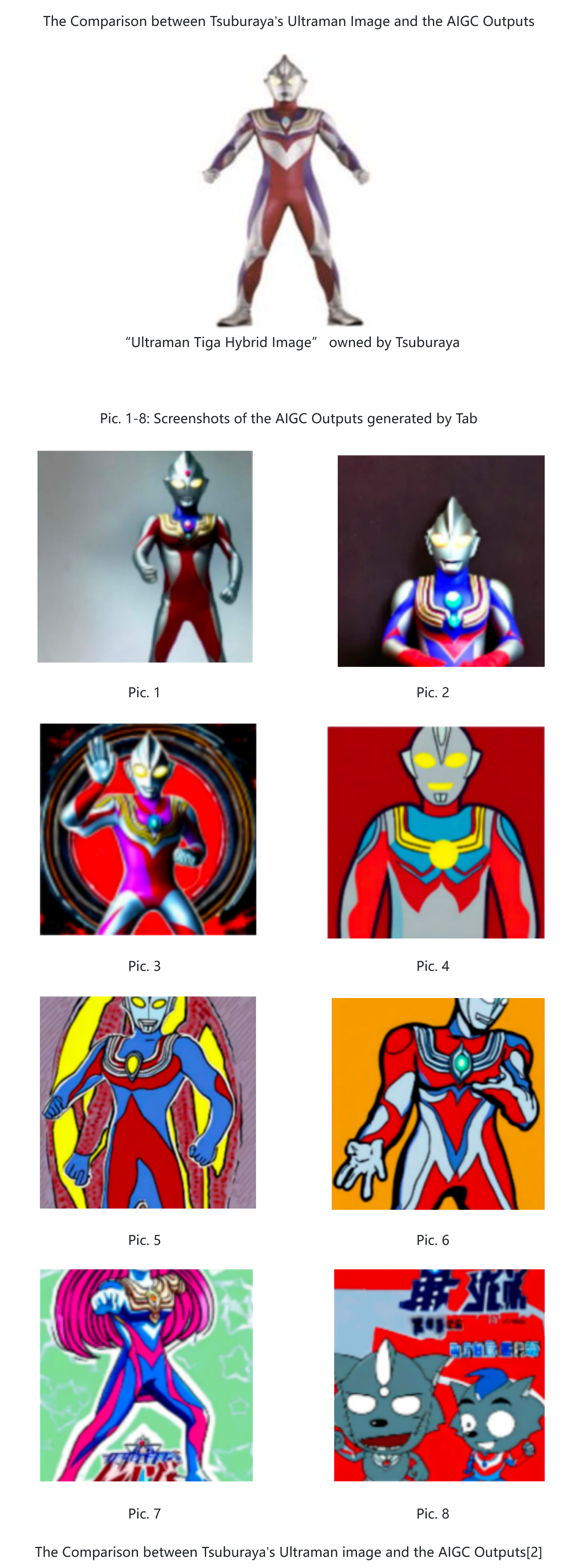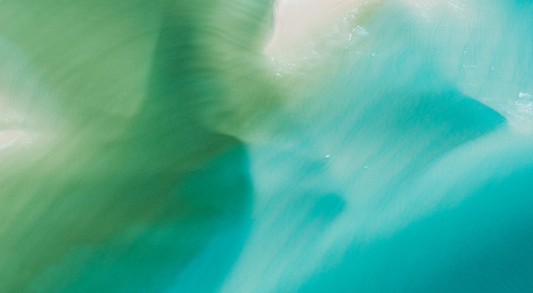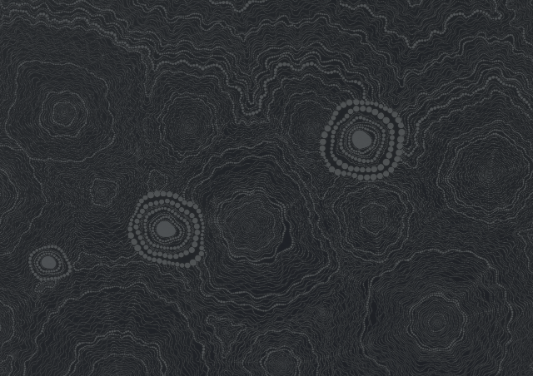Tag:intellectual-property-intellectual-property-dispute-resolution,digital-economy,telecommunications-media-entertainment-and-technology-entertainment,artificial-intelligence
I. Introduction
On February 8, 2024, Guangzhou Internet Court rendered a verdict in China’s first case concerning the infringement of AIGC outputs, finding the defendant, a text-to-image AIGC provider, liable for infringing the copyrights of the famous Ultraman IP.[1] The court also discussed China’s first AI regulation—the Interim Measures for the Management of Generative Artificial Intelligence Services issued in July 2023 (2023 GAI Measures) in its decision, concluding that the defendant failed to exercise reasonable duty of care in generating its AIGC output, thus violating the 2023 GAI Measures.
II. Background
The Japanese company Tsuburaya Productions Co., Ltd. (Tsuburaya) is the copyright owner of the famous cartoon IP -- Ultraman series. Tsuburaya granted to the plaintiff Shanghai Character License Administrative Co., Ltd. (SCLA) an exclusive license to the Ultraman series’ works in China, including the right of reproduction, the right to prepare derivative works, and also the right to enforce. Tsuburaya has also registered its Ultraman series pictures at the Chinese Copyright Office.
The defendant [company A] provides text-picture AI generating services through its website Tab. In late December of 2023, the plaintiff found that by inputting prompts containing or related to “Ultraman”, the defendant’s website would generate identical or substantially similar pictures to its Ultraman series images. The plaintiff then sued the defendant for copyright infringement.
III. Issues
In this case, the court focused on the following two issues: (1) Whether the defendant infringed the plaintiff’s copyrights, i.e., the right of reproduction, right to prepare derivative works, and right of dissemination via the Internet; and (2) If the defendant has constituted any copyright infringement, what civil liabilities it should bear.
1. Whether the defendant infringed the plaintiff’s right of reproduction, right to prepare derivative works, and right of dissemination via the Internet.
On the first issue, Guangzhou Internet Court ruled yes to the first two infringement claims.
(1)Whether the defendant infringed the plaintiff’s right of reproduction
The court found that the subject Ultraman works are well-known in China and can be accessed from several major online streaming platforms such as iQiyi in China. In the absence of contradictory evidence, the defendant can be presumed to have access to the subject Ultraman works. Also, the court found that the AI pictures generated by Tab are substantially similar to the original expressions of the prior copyrightable works “Ultraman”. As a matter of fact, during the AI-picture generating process, when the user input the prompt “Ultraman”, the first picture generated by Tab was an identical Ultraman picture with that of Ultraman works. It was only after the user changed its prompts to “Ultraman with long hair”, then a new picture of Ultraman with long hair would appear; and if the user input another prompt “Ultraman in cartoon style”, he will then receive another picture of Ultraman in cartoon style. Therefore, the court found that the defendant infringed the plaintiff’s right of reproduction.
(2)Whether the defendant infringed the plaintiff’s right to prepare derivative works
Here, the court found that the subject AI-generated pictures partially kept the original expressions of the “Ultraman Tiga Hybrid Image”, but also formed new features of their own, which constituted unauthorized derivative works to the prior copyrightable Ultraman works. Therefore, the court found that the defendant infringed the plaintiff’s right to prepare derivative works.

(3)Whether the defendant infringed the plaintiff’s right of dissemination via the Internet
The court reasoned that, since it already addressed the defendant’s violation of the plaintiff’s right of reproduction and right of preparing derivative works and ruled both in the plaintiff’s favor, the court would not address this claim involving the same infringing act.
2. If the defendant has constituted copyright infringement, what civil liabilities it should bear.
In terms of remedies, the court engaged in a detailed discussion on what specific measures that an AIGC provider should implement to avoid liability. It also quoted the 2023 GAI Measures and ruled that the defendant failed to exercise reasonable duty of care, thus violating Articles 4, 12, and 15 of the 2023 GAI Measures.
(1)On ceasing the infringing act
The defendant argued that it did not develop the Tab AIGC model itself, but rather relied on a 3rd party vendor to generate such AIGC services by interfacing with the 3rd party application program, and therefore it should not be subject to the 2023 GAI Measures. The court however rejected the defendant’s argument, quoting Article 22(2) of the 2023 GAI Measures, and ruled that “AIGC providers”, by definition, also include those who provide AIGC services through interfacing with other application programs, thus finding the defendant qualified as an “AIGC provider” as defined under the 2023 GAI Measures.
Then the court acknowledged that the defendant had taken some measures, such as filtering certain keywords, to stop generating infringing pictures to some extent. However, during trial, one could still input other keywords related to Ultraman and generate pictures substantially similar to the prior copyrightable Ultraman images. Therefore, the court concluded that the defendant should take extra steps to the extent that its AIGC function no longer generates any pictures substantially similar to the prior copyrightable Ultraman works when its users input any Ultraman-related prompts.
In terms of the plaintiff’s claim on training data, the court rejected its request for the defendant to delete the copyrightable Ultraman works from its training data base because the defendant itself did not train the AIGC model.
(2)On whether the defendant should pay compensation for damages
The court found that the defendant’s fault needs to be taken into consideration when determining its civil liability for paying compensation for damages. AIGC as tools can be used for both legal and illegal purposes. The court found the defendant as an AIGC provider failed to exercise reasonable duty of care as required by the 2023 GAI Measures in the following aspects:
- Failure to implement a complaint reporting mechanism. The court quoted Article 15 of the 2023 GAI Measures, finding that by the date of the trial, the defendant had not established any complaint reporting mechanism on its website Tab for the copyright holders to enforce their copyrights.
- Failure to remind users to respect IP in the ToU. The court quoted Article 4(3) and 4(5) of the 2023 GAI Measures, finding that the defendant, as an AIGC provider, also failed to include relevant provisions in its Term of Use Agreement or in other ways to remind its users that they should not infringe the IP rights of others. The court emphasized that, AIGC users might not have a clear understanding of the infringement risks associated with AIGC outputs, and therefore AIGC providers have a duty to remind/educate users to refrain from using the AIGC services to infringe the IP rights of others.
- Failure to mark AIGC outputs. Pursuant to Article 12 of the 2023 GAI Measures and Article 17 of the Provisions on the Administration of Deep Synthesis of Internet-based Information Services (Deep Synthesis Provisions), AIGC providers have a duty to “mark” the AIGC outputs to distinguish them from human-authored works. The court noted that, AIGC providers’ duty of marking AIGC outputs not only protects the public’s right of information, but also protects the IP holders.
In summary, the court ruled that the defendant failed to exercise its duty of care and thus was subjectively at fault and should bear the corresponding liability to pay compensation of RMB10,000 for its infringement act.
IV. Comments
The Ultraman case is the first Chinese case addressing the infringement issue associated with AIGC outputs, and it is also the first court decision interpreting China’s first AI regulation--the 2023 GAI Measures.
In particular, the Guangzhou court had a detailed discussion with respect to AIGC providers’ reasonable duty of care when generating AIGC outputs, including its obligations (1) to set up a complaint reporting mechanism; (2) to remind/educate users to respect IP rights of others; and (3) to mark the AIGC outputs to distinguish from human-authored works. The failure of AIGC providers to satisfy the aforesaid requirements could indicate its violation of the 2023 GAI Measures and also its copyright infringement liability.
It should also be noted that, the court did emphasize the need “not to overburden AIGC providers”, where AIGC providers should take “proactive measures to fulfill reasonable and affordable duty of care”, so as to leave space for the development of generative AI industry, which is still at its early stage. At the end of the decision, the court called for a creation of a Chinese-style AI governance system that is balanced, inclusive, and compatible with both innovation and protection.
Thanks to Zhao Yibing for her contribution to this article.
Scan the QR code to subscribe to "King & Wood Mallesons" for more information
See Guangzhou Internet Court (2024) Yue 0192 Min Chu 113. (2024粤0192初113号).
The comparison between Tsuburaya’s Ultraman image and the AIGC outputs generated by the defendant's website Tab, see Guangzhou Internet Court (2024) Yue 0192 Min Chu 113, p.10-11.



